
Prior to that WAvenue (see below) beat Wimbledon (then an amateur club) 3-0 away after a 2-2 draw at home, in Round 1.
In Round 2 WA forced Watford to a 1-1 draw and then beat them 1-2 at Watford.
In Round 3 Avenue at home beat Stockport County 2-1.
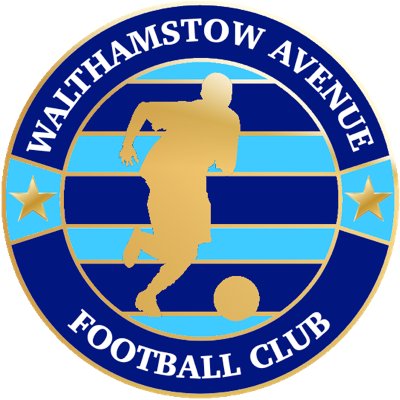
Manchester United continued towards the Cup Final but met their match against Everton on February 14th, 2-1 in Round 5.
Everton then beat Aston Villa away 0-1 in Rd 6 (Quarter-finals) and were beaten 4-3 by Bolton Wanderers in the Semi-final, on neutral ground, Maine Road, 3-4 on March 21st.
In the other half of the draw, Blackpool won their way through to Wembley with Stanley Matthews and all, beating the Wanderers 4-3 in what was known as the Matthews Final.
Blackpool had beaten Sheffield Wednesday away 1-2 in Rd 3, Huddersfield at home 1-0 on January 31st, Southampton after a 1-1 draw at Blackpool and then 1-2 away at The Dell, and Arsenal 1-2 at Highbury.
Finchley was the only other non-league club to venture into the 3rd Round.
Clubs reaching the 2nd Rd that season were: Lanelly, Bath City, Bishop Auckland, Great Yarmouth Town, Peterborough Utd, Hereford United, Gainsborough Trinity.
Now what about Walthamstowe Avenue? Founded in 1900 the club was successful but faced closure in the 1980s, merging with Leytonstone and Ilford in 1988. The club then diluted and "became" part of the ever changing Dagenham and Redbridge FC, then basically lost its identity. It has lately revived as a Essex Sunday Corinthian League side. Its history lives on.......
 1960-1 FA Amateur Cup Final, 2-1 win at Wembley, WA v West Auckland Town in front of 45,000.
1960-1 FA Amateur Cup Final, 2-1 win at Wembley, WA v West Auckland Town in front of 45,000.The Avenue also beat Leyton the FA Amateur Cup Final in 1951-2, 2-1, watched by 100,000 in the Wembley Stadium.
https://baileyfootballblog.blogspot.com/2019/11/dave-thomas-family-and-hannah.html
READ THIS LINK TO WEST AUCKLAND AND DAVE THOMAS....MORE HISTORY.


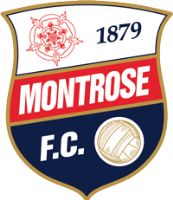

 This is Ian Dickson, who signed for Montrose in the 1960s and appeared in the Guinness Book of Records as the "youngest player to score a hat trick in an away league match in Scotland" and also as "a debutant in British Football".
This is Ian Dickson, who signed for Montrose in the 1960s and appeared in the Guinness Book of Records as the "youngest player to score a hat trick in an away league match in Scotland" and also as "a debutant in British Football".
 Its chilly outside today and I don't think that Tracy Chandler, a hairdresser by day, will be venturing out onto the Doncaster Rovers pitch in just her underwear. As the person usually inside the Donny Dog costume, she "got her Donny Dog kit off" in June 2011, as she appeared alongside the club mascot "Donny Dog" suit, in a saucy photo shoot for charity, which appeared in the "Sunday Sport" newspaper. Tracy is 40 years old and a mother of three who voluntarily raises money for NSPCC through her mascot costume, a voluntary act she had done for four years.
Its chilly outside today and I don't think that Tracy Chandler, a hairdresser by day, will be venturing out onto the Doncaster Rovers pitch in just her underwear. As the person usually inside the Donny Dog costume, she "got her Donny Dog kit off" in June 2011, as she appeared alongside the club mascot "Donny Dog" suit, in a saucy photo shoot for charity, which appeared in the "Sunday Sport" newspaper. Tracy is 40 years old and a mother of three who voluntarily raises money for NSPCC through her mascot costume, a voluntary act she had done for four years.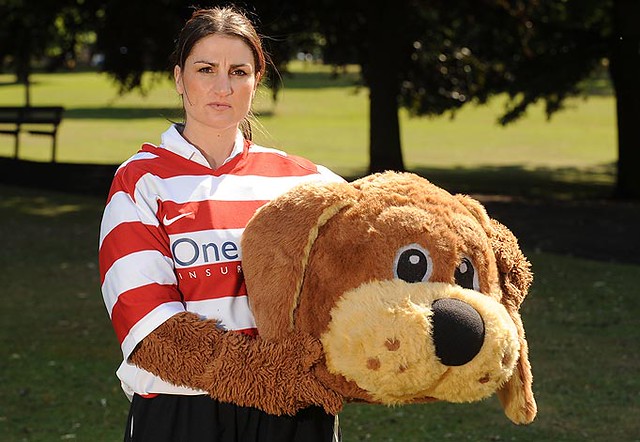
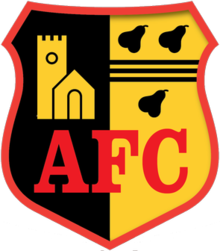

 The Manor Ground, Oxford Utd hosted two ties.
The Manor Ground, Oxford Utd hosted two ties. He was born in Scarborough on January 26th 1919 and was a player, coach, manager and later a scout for the Spurs. He started his "career" working in a local laundry and was offered a trial having played for local side Northfleet FC at 17 years old. he joined the "groundstaff" (which in those days was how most players started their career) being paid £2 a week. He made a professional debut for Spurs against Blackburn Rovers on October 22nd 1938.
He was born in Scarborough on January 26th 1919 and was a player, coach, manager and later a scout for the Spurs. He started his "career" working in a local laundry and was offered a trial having played for local side Northfleet FC at 17 years old. he joined the "groundstaff" (which in those days was how most players started their career) being paid £2 a week. He made a professional debut for Spurs against Blackburn Rovers on October 22nd 1938.
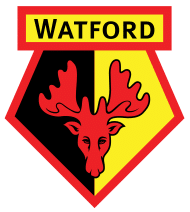






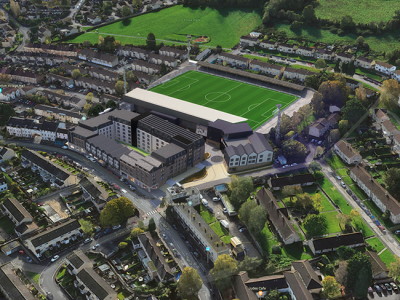

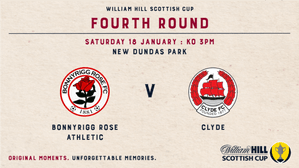

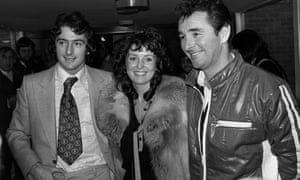


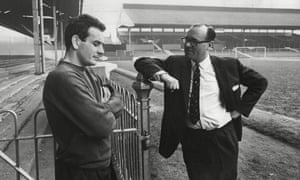 Dunnett with club captain Bobby Ross in 1967 at the "start"in Division 4.
Dunnett with club captain Bobby Ross in 1967 at the "start"in Division 4.